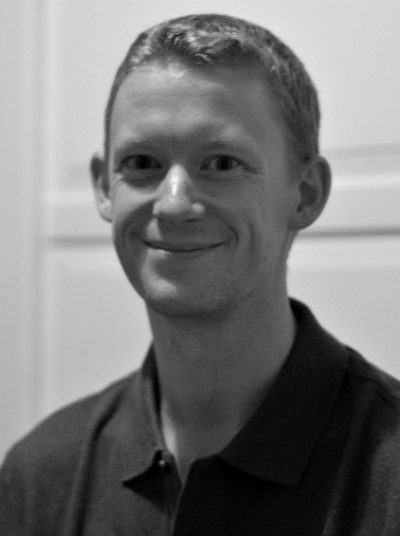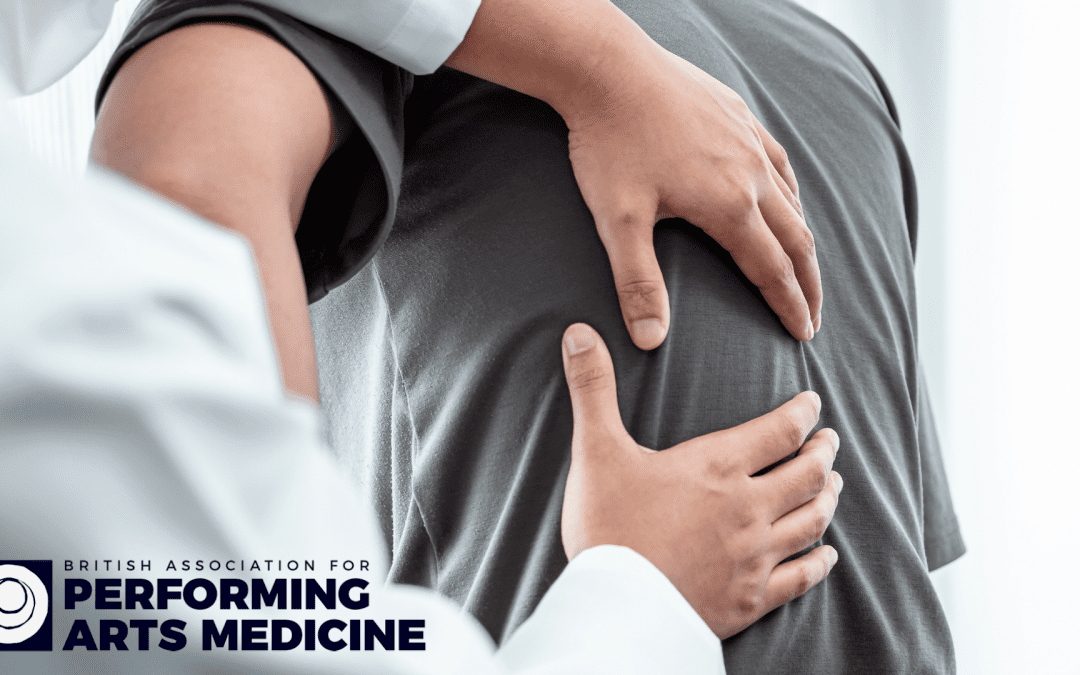 In our guest blog, Osteopath and former professional ballet dancer, Toby Pollard-Smith, considers his journey from dance to healthcare, and strategies for working collaboratively with performing artists to solve problems.
In our guest blog, Osteopath and former professional ballet dancer, Toby Pollard-Smith, considers his journey from dance to healthcare, and strategies for working collaboratively with performing artists to solve problems.
Who am I and how did I get here?
I am an osteopath. Before osteopathy, I was a professional ballet dancer. Quite a jump, you might think.
I remember being taken to ballet classes from about 4 years of age. My older sister did ballet, so it must have been convenient. The next thing I remember is winning some competitions (much to my sister’s annoyance) and becoming a Junior Associate at the Royal Ballet School, which I never enjoyed. Despite this, by the time I was a teenager I had become good at ballet and was being pushed towards professional ballet school.
A career in dance seemed attractive, and I went to the Central School of Ballet aged 16. I graduated in 2000 and got a contract with The Israel Ballet. Up to that point I had always been one of the better dancers in any room or studio, but as I settled into company life, I realised there were plenty of professional dancers who were much, much better than me.
I became a steady, reliable dancer over the next few years, and after leaving Israel I did some shorter dance jobs followed by two seasons with Matthew Bourne’s Swan Lake. Having been bowled over by that show as a 16-year-old, it was great to join the cast and travel the world, throwing myself around stages and getting paid for it. In fact, towards the end of my time in that show, I wondered if I would ever again enjoy dancing quite as much. I had seen some colleagues start online courses or degrees while we were touring, and it made me think that I should start to plan the next chapter of my life.
On my return to London, I researched the pathway to becoming an osteopath. After an open day at the British School of Osteopathy, I remember a long, blurred period of studying, and working in a pub to pay my fees. I qualified in 2014 and in 2015 published my undergraduate research investigating dancers’ injuries. I’ve been in private practice ever since, joined BAPAM as a registered practitioner, gotten married, bought a house and had two kids. So here we are.
How do I feel now?
Being an osteopath is a slightly strange existence. People don’t seem to really know what we do. The typical suggestion is that we are back specialists, or bone doctors. Eyebrows raise when we point out that we treat the entire body, and all its parts, hard or soft. The general suspicion seems to be that we either solve every problem by cracking a joint, or by sitting still and silently holding someone’s head.
In reality, a good number of my patients think I’m a physiotherapist, despite my repeated assertions that I am not (I’m not making a political statement – it just needs clearing up for invoicing and insurance).
Does this frustrate me? A little, but I’m learning to get over it. Patients typically make a bond with a practitioner, and if that bond is successful, it matters not whether the practitioner belongs to one tribe or another.
But does Osteopathy work?
What a broad question this is. Are we expected to be able to answer it? Do we ask if “medicine” works? Where would you start to answer such a question?
For start, it would be nice if osteopaths could give a nice succinct explanation of what we do. But we struggle. There are some who propose that we should merge with physiotherapists and chiropractors into a more general field of manual therapy, but others fear for the loss of an osteopathic (pseudo-)philosophy that they hold dear and that perhaps comes closest to defining us.
As Dr Murgatroyd wrote recently1, the contemporary spotlight of manual therapy, powered by its currently favoured biopsychosocial model shines harshly on osteopathy. Patients are seen to assume too passive a role in the therapeutic relationship when “traditional” osteopathy is considered. I don’t disagree with this and was disturbed, for a start, at how little provision of rehab there was in a four-year osteopathy degree. As an injured dancer, I had always relied on a mixture of treatment and rehab.
So, I embarked on my journey to become the sort of practitioner that I hope I might have found useful. As I reflect on seven years in practice, I might humbly offer the following topics for describing what I have had to learn.
Step One: Listen
The communication between patient and practitioner is an area of expanding academic interest, and awareness of the importance of language is becoming more established.
Patients possess the information that a practitioner needs, even if they are not aware of it. It is therefore the duty of a practitioner to create an environment in which patients are free to narrate the history of their condition, describe their lived experiences, and share their fears and beliefs.
As Matt Low writes: “A person’s story is a phenomenological account that far supersedes that of a descriptive and categorical diagnosis with regards to how to frame and personalise a treatment or management approach.” 2
With a narrative approach, it is possible to explore shared experiences. In the realm of performing arts medicine, this offers greater opportunities to develop relationships between patient and practitioner. Performing artists fear a lack of understanding when they seek treatment, whether it is about the specific nature of their injury, or about the reality of that injury within the context of their career3.
It is in these discussions between patient and practitioner that any specialist area of medicine earns its existential stripes. If practitioners can appreciate how their patients navigate through daily struggles to reach their goals, their contributions can in return become more valuable to those patients.
There are plenty of medics who specialise in treating a body part or area, but it is also of value to find practitioners whose expertise resides in helping a cohort of patients with whom they have shared experiences. Performing artists will naturally derive benefit from spending time with practitioners who know their environment, and that is a central reason for BAPAM’s existence.
The better that the lived experience of your patient is understood, the easier it is to unleash their potential for transformation.
Step Two: Avoid the traps
A lack of time causes pressure, and pressure can force people to cut corners. When time is limited for diagnosing patient presentations, pattern recognition can start to take priority over deductive reasoning.
- Pattern recognition provides a short cut to allow swift decision making, but it can lead to mistakes in diagnosis.
- Deductive reasoning is slower, and while thorough, can waste valuable time in clinic for delivering manual treatment, sharing rehab ideas, or formulating a management plan.
There is inevitably a tension in clinic between these two approaches. While they each have utility, we must minimise the occasions when we might jump to a conclusion based on incomplete or flawed information. Perhaps the most common trap in clinic is following a diagnosis that has been ready made for us.
In practical terms, it’s important to ask patients who arrive with a diagnosis how they came to be given that diagnosis. Who gave it to them and based on what information? How long ago was this diagnosis settled upon, and have the patient’s symptoms altered since then? What treatment or management has been instigated, and has it produced the desired results?
There’s no need to argue with everyone, but a healthy index of clinical suspicion can help turn cases around, delivering best results to patients, especially performing artists who often get passed from practitioner to practitioner as they travel.
Step Three: Offer value
Once a sense of a presenting problem has been established, the notion of value is of utmost importance to patients and cannot be overlooked. It’s not a commercial question, but rather a case of effectiveness.
Should a patient only have the funds to pay for a single consultation, or a schedule that takes them on the road immediately after their appointment, we should be able to adapt what we provide to offer them the greatest possible value. Education and advice might become more beneficial than starting a course of manual therapy.
Should a performing artist find that their greatest pressure is the need to keep performing for a series of important dates, the most valuable approach might be to offer advice on how best to prepare for each performance, and what to do after those performances to keep their condition in check. It could well be a very different protocol compared to what might be offered to “cure” the condition, but the patient’s needs dictate a different approach.
Only through appreciation of the needs of the patient can such strategies be offered. The desire to fly under the radar is very valuable in many performing arts circles and receiving advice from someone who has flown that path can be of huge value.
What do I do that’s different?
I typically feel that my answer to this is a bit of a let-down, since I don’t typically feel that I do anything differently with performing artists compared to non-performing artists. A consultation with a performing artist might appear very particular to an outside observer, but I believe that the underpinning logic is the same as for any other patient.
With all my patients, I listen, I watch out for traps, and then I try to offer value in what the session contains. Yes, I know more about being a dancer than any other career and that shared experience is an asset to dancers. But I also feel that a performing arts injury is unique only in that it has happened to a performing artist. We treat people, not conditions.
References
- Murgatroyd, D. (2021) The Hands-On Approach of Osteopathy and the Performing Arts Physician. BAPAM website, https://www.bapam.org.uk/the-hands-on-approach-of-osteopathy-and-the-performing-arts-physician/
- Low, M. (2020) ‘Above and Beyond Statistical Evidence. Why Stories Matter for Clinical Decisions and Shared Decision Making’, in Anjum, R.L. et al (eds.), Rethinking Causality, Complexity and Evidence for the Unique Patient. Springer, open access book, pp 127-136
- Pollard-Smith, T., Thomson, O. P. (2017) Professional ballet dancers’ experience of injury and osteopathic treatment in the UK: A qualitative study. Journal of Bodywork and Movement Therapies. 21(1), pp 148-156

